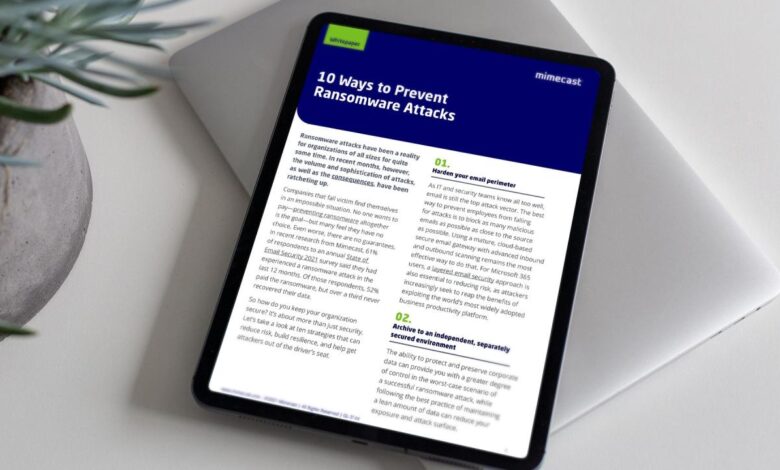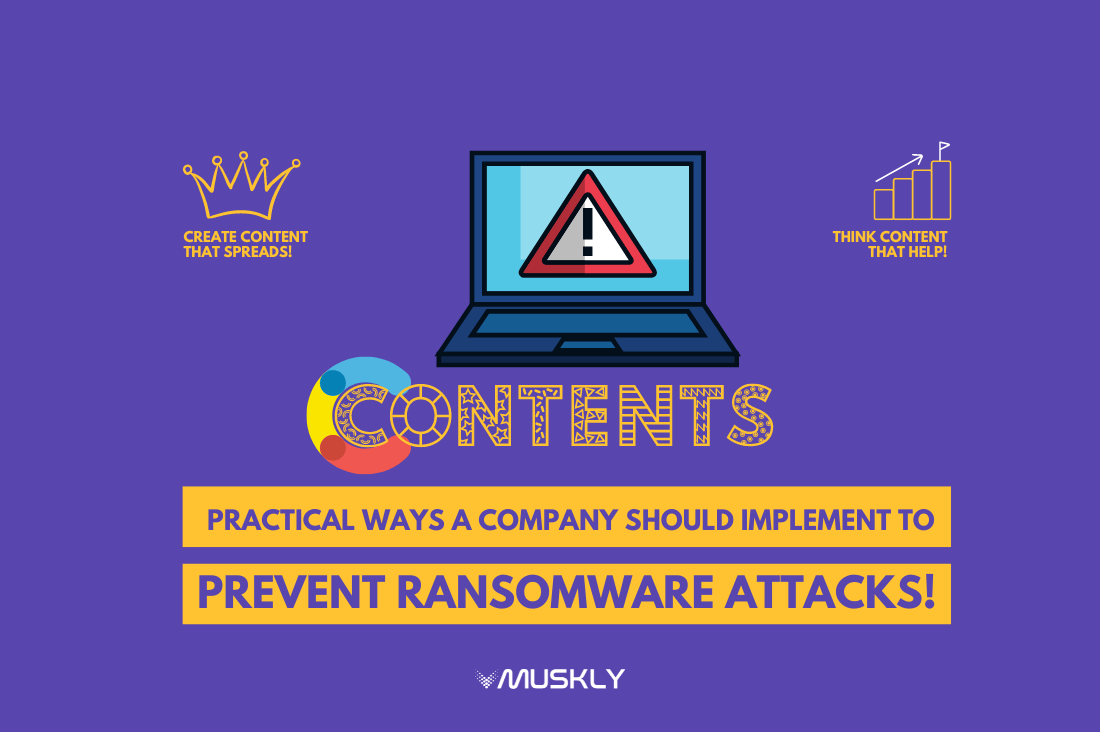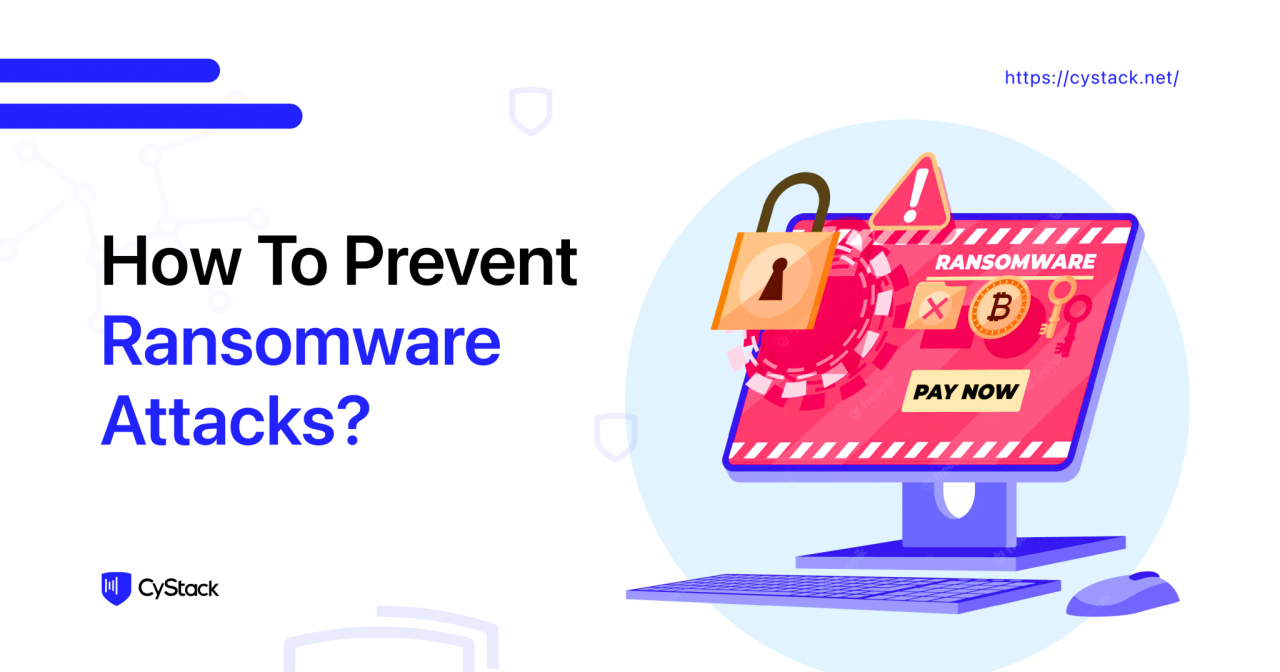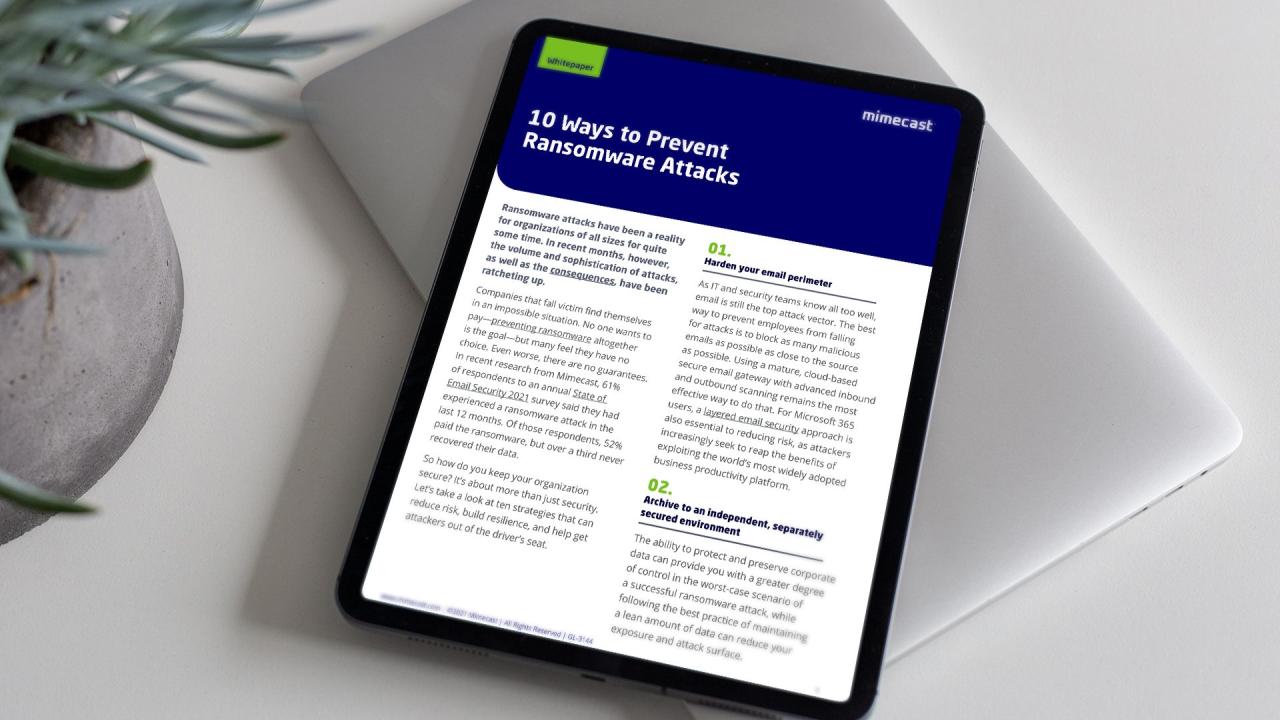
5 Steps to Stop Ransomware-as-a-Service in Its Tracks
5 steps to stop ransomware as a service in its tracks – 5 Steps to Stop Ransomware-as-a-Service in Its Tracks – that’s the ultimate goal, right? Ransomware-as-a-Service (RaaS) has become a terrifyingly efficient business model for cybercriminals, making it easier than ever for them to launch devastating attacks. This isn’t just another tech article; it’s a survival guide. We’ll break down how RaaS works, the sneaky ways it infects your systems, and – most importantly – the concrete steps you can take to protect yourself.
Get ready to become your own cybersecurity superhero.
We’ll cover everything from understanding the RaaS lifecycle and identifying common attack vectors to implementing proactive security measures, bolstering your network defenses, and creating a rock-solid incident response plan. We’ll even touch on the tricky subject of negotiating with ransomware operators (only when absolutely necessary and safe, of course!). This isn’t about fear-mongering; it’s about empowerment. By the end, you’ll have a clear roadmap to protect your data and peace of mind.
Understanding Ransomware-as-a-Service (RaaS): 5 Steps To Stop Ransomware As A Service In Its Tracks

Ransomware-as-a-Service (RaaS) has fundamentally changed the landscape of cybercrime. It’s no longer necessary for malicious actors to possess advanced technical skills to launch devastating ransomware attacks; RaaS platforms provide the tools and infrastructure, making it accessible to a wider range of criminals, including those with limited technical expertise. This democratization of ransomware has significantly increased the frequency and impact of attacks globally.RaaS operates on a business model similar to legitimate software-as-a-service (SaaS) platforms.
Cybercriminals, often acting as affiliates, pay a subscription fee or a percentage of the ransom collected to RaaS operators. These operators provide the ransomware malware, infrastructure (command-and-control servers, data exfiltration services), and sometimes even customer support (in the form of technical assistance or marketing advice). This division of labor allows for greater efficiency and scalability of ransomware attacks.
The impact on cybercrime is substantial, resulting in increased attacks, higher financial losses for victims, and a more complex threat landscape for organizations to navigate.
The Lifecycle of a RaaS Attack
A typical RaaS attack follows a predictable lifecycle. It begins with initial infection, often through phishing emails containing malicious attachments or links leading to exploit kits. Once the ransomware is deployed, it encrypts the victim’s data. The ransomware then displays a ransom note demanding payment in cryptocurrency, usually Bitcoin or Monero, for decryption. After payment, the RaaS operator (or their affiliate) provides a decryption key (if they intend to honor their promise).
However, there is no guarantee of decryption, even after payment. The entire process can be automated, with the ransomware communicating with the command-and-control server to receive instructions and exfiltrate data. In some cases, the RaaS operators also offer data leak sites, adding further pressure on victims to pay.
Examples of Popular RaaS Platforms and Their Functionalities
Several RaaS platforms have emerged over the years, each offering varying levels of functionality and sophistication. While specific names are often kept confidential due to ongoing investigations, general functionalities include providing the ransomware code itself, hosting infrastructure for command and control, and offering affiliates support and tools for spreading the malware. Some platforms even offer additional services such as data exfiltration and encryption tools.
The sophistication of these platforms varies greatly, with some providing relatively simple tools while others offer advanced features such as multi-stage encryption or self-destruct mechanisms. The ever-evolving nature of these platforms makes them a significant and persistent threat.
Comparison of RaaS Attack Vectors
Understanding the various attack vectors used in RaaS attacks is crucial for effective prevention. The table below compares several common vectors based on their success rate, prevention methods, and illustrative examples. Success rates are difficult to quantify precisely due to the clandestine nature of these attacks and the varying levels of security in target organizations. The figures presented are estimates based on industry reports and observations.
| Vector Type | Success Rate (Estimate) | Prevention Methods | Example |
|---|---|---|---|
| Phishing Emails | 20-30% | Security awareness training, email filtering, multi-factor authentication | Email with malicious attachment disguised as an invoice. |
| Exploit Kits | 10-20% | Regular software patching, web application firewalls, intrusion detection systems | Compromised website delivering malware through a vulnerability. |
| Malvertising | 5-15% | Ad blocking software, careful selection of advertising networks | Malicious advertisement on a legitimate website. |
| Software Vulnerabilities | 15-25% | Regular software updates, vulnerability scanning, penetration testing | Exploiting a known vulnerability in a piece of software to gain access. |
Proactive Security Measures
Preventing ransomware-as-a-service (RaaS) attacks requires a multi-layered approach focusing on proactive security measures. This involves strengthening your organization’s defenses before an attack even occurs, minimizing the risk of successful infiltration and data encryption. By implementing robust security practices, you significantly reduce your vulnerability to RaaS attacks and the potentially devastating consequences.A robust security posture hinges on several key elements, including employee training, endpoint protection, regular software updates, and strong authentication mechanisms.
These preventative measures work synergistically to create a formidable barrier against RaaS attacks.
Security Awareness Training
A comprehensive security awareness training program is crucial for mitigating the risk of phishing and social engineering attacks, common entry points for RaaS. This program should go beyond simple awareness and delve into practical skills to identify and avoid malicious emails, websites, and attachments. Employees need to understand the tactics used by attackers, such as spear phishing (highly targeted attacks), and be equipped to recognize and report suspicious activity.
Regular training sessions, simulations, and interactive modules are vital to ensure continuous learning and adaptation to evolving threats. For example, training could include realistic phishing simulations where employees receive simulated phishing emails and are assessed on their ability to identify and report them. The program should also cover best practices for handling suspicious links, attachments, and unsolicited communications.
Endpoint Security Best Practices
Securing endpoints—laptops, desktops, and servers—is paramount in preventing RaaS infections. This involves deploying robust endpoint detection and response (EDR) solutions that monitor system activity for malicious behavior. Regular vulnerability scans and penetration testing help identify and address security weaknesses before attackers can exploit them. Implementing strong access controls, such as restricting administrative privileges to only authorized personnel, further limits the impact of a potential compromise.
Up-to-date antivirus software and firewalls are also essential components of a strong endpoint security strategy. For example, a company could implement a policy requiring all endpoints to have up-to-date antivirus software and regularly scheduled security scans. This combined approach creates a layered defense that significantly reduces the likelihood of successful malware infections.
Software Updates and Patching
Regular software updates and patching are critical for addressing known vulnerabilities that attackers can exploit. Unpatched software represents a significant security risk, creating easy entry points for malware. A structured patching schedule, coupled with automated update mechanisms, ensures that systems are consistently protected against the latest threats. This includes operating systems, applications, and firmware updates. For instance, a company might establish a policy mandating that all software updates are applied within 72 hours of release, prioritizing critical security patches.
Prioritizing updates and patches prevents attackers from leveraging known vulnerabilities to gain access to systems.
Strong Passwords and Multi-Factor Authentication (MFA)
Strong passwords and multi-factor authentication (MFA) are fundamental in preventing RaaS attacks. Strong passwords should be unique, complex, and regularly changed. MFA adds an extra layer of security by requiring users to provide multiple forms of authentication, such as a password and a one-time code from a mobile device. This makes it significantly harder for attackers to gain unauthorized access even if they obtain a password.
Implementing MFA across all systems and accounts dramatically reduces the risk of successful breaches, as even if an attacker compromises a password, they still need access to the second factor. For example, a company could enforce a password policy requiring passwords to be at least 12 characters long, including uppercase and lowercase letters, numbers, and symbols, and implement MFA for all employee accounts.
This makes it considerably more difficult for attackers to gain unauthorized access to systems and data.
Network Security and Data Protection
Ransomware attacks don’t just encrypt your files; they exploit weaknesses in your network and data protection strategies. A robust defense requires a multi-layered approach focusing on preventing the initial infection, limiting its spread, and ensuring rapid recovery. This section dives into the crucial elements of network security and data protection to effectively combat RaaS threats.Network segmentation, robust intrusion detection/prevention systems, and comprehensive data backup and recovery strategies are fundamental pillars of this defense.
Failing to address these areas leaves your organization vulnerable to crippling ransomware attacks and potentially devastating financial and reputational damage. The following sections detail how to implement these crucial safeguards.
Network Segmentation
Network segmentation divides your network into smaller, isolated segments. This limits the impact of a ransomware infection. If a segment is compromised, the ransomware cannot easily spread to other critical parts of your network, such as databases, financial systems, or customer data. This containment strategy buys valuable time for remediation efforts and minimizes the overall damage. For example, separating your guest Wi-Fi from your internal network prevents a compromised guest device from easily accessing sensitive internal systems.
Implementing strong access controls between segments is also vital; this ensures that only authorized users and systems can communicate across these boundaries.
Intrusion Detection and Prevention Systems (IDS/IPS)
IDS/IPS systems act as vigilant guards, monitoring network traffic for malicious activity. IDS passively detects suspicious patterns, alerting administrators to potential threats. IPS takes a more active role, blocking or mitigating malicious traffic in real-time. Deploying both IDS and IPS provides a comprehensive layered approach to threat detection and prevention. A well-configured IPS can effectively block known ransomware exploits and prevent the initial infection.
Regular updates are crucial to ensure that your IDS/IPS remains effective against the latest ransomware variants. Consider employing a combination of network-based and host-based IDS/IPS for broader protection.
Data Backup and Recovery Strategies, 5 steps to stop ransomware as a service in its tracks
Effective data backup and recovery is your last line of defense against ransomware. It allows you to restore your systems and data to a clean state, minimizing downtime and data loss. A comprehensive strategy includes multiple backup methods and locations, ensuring data redundancy and resilience. Offline backups, stored physically away from your primary network, are crucial. Immutable storage, where data cannot be altered or deleted after it’s written, further protects your backups from ransomware attacks.
Regular testing of your backup and recovery procedures is also vital to ensure they function correctly when needed. The 3-2-1 backup rule (three copies of data, on two different media types, with one copy offsite) is a widely accepted best practice.
Implementing Regular Data Backups
A well-defined process is crucial for successful data backups. Here’s a step-by-step guide:
- Identify Critical Data: Determine which data is most important and requires the highest level of protection. This might include financial records, customer data, and intellectual property.
- Choose Backup Method: Select appropriate backup methods, such as full, incremental, or differential backups, based on your needs and resources.
- Select Backup Media: Choose reliable and secure backup media, such as external hard drives, cloud storage, or tape drives. Consider using multiple media types for redundancy.
- Schedule Backups: Establish a regular backup schedule, ensuring frequent backups of critical data. The frequency depends on the rate of data changes and your recovery time objective (RTO).
- Test Backups: Regularly test your backup and recovery process to ensure it works correctly and you can restore your data successfully in case of a ransomware attack or other disaster.
Incident Response and Recovery

A robust incident response plan is crucial for minimizing the damage caused by a ransomware attack. This plan should be tested regularly to ensure its effectiveness and to identify any gaps in your security posture. A well-defined response will not only limit the spread of the ransomware but also streamline the recovery process, reducing downtime and potential financial losses.Having a detailed, documented plan is essential.
This plan should cover all aspects of responding to an attack, from initial detection to full system recovery. It’s vital to remember that speed and decisive action are key in mitigating the impact of ransomware.
Incident Response Plan Steps
A comprehensive incident response plan should include the following key steps: First, immediate containment of the threat. Then, eradication of the malware. Finally, recovery of your systems and data. Thorough investigation follows, identifying vulnerabilities exploited and preventing future attacks. Consider the human element as well; employee training and awareness are critical in preventing future incidents.
Isolating Infected Systems
Upon detection of a ransomware attack, the immediate priority is to isolate infected systems from the network. This prevents the ransomware from spreading to other devices and servers. Disconnecting the infected machine from the network, both physically (by unplugging the network cable) and logically (by disabling network interfaces), is the first step. This isolation should be performed swiftly and decisively.
Following this, initiate a full system scan with updated anti-malware software. If possible, create a forensic image of the infected system before initiating any remediation efforts. This image can be invaluable for future analysis and investigation.
Communication with Law Enforcement
Depending on the severity of the attack and the nature of the data affected, reporting the incident to law enforcement is crucial. Law enforcement agencies often have specialized cybercrime units that can assist in investigating the attack, identifying the perpetrators, and potentially recovering encrypted data. Documentation of the attack, including timestamps, affected systems, and any ransom demands, is vital for this process.
Early communication with authorities can significantly enhance the chances of a successful investigation.
Negotiating with Ransomware Operators
Negotiating with ransomware operators is a complex and risky undertaking. It should only be considered as a last resort after exhausting all other options, and only with the guidance of cybersecurity experts and legal counsel. Paying a ransom doesn’t guarantee data recovery, and it may encourage further attacks. It’s important to carefully consider the legal and ethical implications before engaging in any negotiation.
Documentation of all communication with the attackers is essential.
Incident Response Process
| Phase | Actions | Timeline | Responsible Party |
|---|---|---|---|
| Preparation | Develop and test incident response plan; employee training; regular security assessments | Ongoing | IT Security Team, Management |
| Detection & Analysis | Identify the attack; analyze the impact; assess the threat | Minutes to Hours | Security Operations Center (SOC), IT Staff |
| Containment & Eradication | Isolate infected systems; remove malware; secure network | Hours to Days | SOC, IT Staff, Incident Response Team |
| Recovery & Remediation | Restore data from backups; rebuild systems; patch vulnerabilities | Days to Weeks | IT Staff, Data Recovery Specialists |
Post-Incident Activities and Prevention
The aftermath of a ransomware attack is critical. Effective post-incident activities are not just about recovery; they’re about learning from the experience to prevent future attacks. A thorough analysis, coupled with continuous monitoring and improvements to your security posture, is crucial for long-term protection against RaaS threats.A comprehensive post-incident analysis goes beyond simply restoring systems. It’s a deep dive into understanding how the attack happened, identifying vulnerabilities exploited, and determining the root causes.
This detailed investigation allows for targeted improvements to your security defenses, preventing similar incidents in the future. This process often involves forensic analysis of infected systems, network logs, and security event logs to reconstruct the timeline of the attack and pinpoint weaknesses.
So, you’re looking to nail down those 5 steps to stop ransomware as a service in its tracks? Strong security practices are key, of course, but building robust, secure applications is equally vital. That’s where understanding the future of app development comes in, and checking out this article on domino app dev the low code and pro code future will help you build more resilient systems.
Ultimately, securing your apps is just as important as implementing those 5 ransomware prevention steps – it’s a holistic approach.
Post-Incident Analysis Report
A detailed post-incident analysis report should document the entire incident, from initial detection to full recovery. This report should include a timeline of events, a description of the ransomware used, the extent of the damage, the methods used to breach security, and a comprehensive list of vulnerabilities exploited. The report should also Artikel specific recommendations for remediation and preventative measures.
For example, a report might detail how a phishing email led to a compromised credential, which then allowed the attackers access to the network. The report would then recommend enhanced security awareness training for employees and multi-factor authentication for all user accounts. The goal is to create a clear and actionable document that informs future security strategies.
Continuous Monitoring and Threat Intelligence
Continuous monitoring is essential for early detection of malicious activity. This involves using security information and event management (SIEM) systems to monitor network traffic, system logs, and security alerts in real-time. Threat intelligence feeds provide crucial context, alerting you to emerging threats and vulnerabilities. By subscribing to threat intelligence services and actively monitoring known malicious IP addresses and domains, organizations can proactively identify and mitigate potential threats before they can cause significant damage.
For instance, a threat intelligence feed might alert you to a new variant of ransomware targeting a specific vulnerability in your network infrastructure, allowing you to patch that vulnerability before an attack occurs.
Improving Security Posture
Improving security posture involves implementing multiple layers of defense to make it significantly harder for attackers to succeed. This includes strengthening network security with firewalls, intrusion detection/prevention systems (IDS/IPS), and regular vulnerability scanning and patching. Data protection strategies are crucial, employing robust data backup and recovery solutions, along with data encryption both in transit and at rest. Regular security awareness training for employees is also essential, focusing on identifying and avoiding phishing scams and other social engineering attacks.
For example, implementing a zero-trust security model, where every user and device is verified before access is granted, significantly reduces the attack surface.
Improving Incident Response Capabilities and Team Training
A well-defined incident response plan is critical. This plan should Artikel clear roles and responsibilities, communication protocols, and escalation procedures. Regular training and simulations are vital to ensure that the team can effectively respond to an attack. Tabletop exercises, which simulate real-world scenarios, allow the team to practice their response and identify areas for improvement. For example, a simulation might involve a mock ransomware attack, forcing the team to practice containment, eradication, and recovery procedures.
This ensures that in a real-world scenario, the team is prepared and can act quickly and efficiently. Post-incident reviews should be conducted after every security incident, no matter how small, to evaluate the effectiveness of the response and identify areas for improvement.
Closure

Stopping ransomware isn’t a one-time fix; it’s an ongoing process. By understanding the business model of RaaS, implementing proactive security measures, and having a robust incident response plan, you significantly reduce your risk. Remember, prevention is always better than cure, but having a plan B is crucial. Don’t just react to threats – anticipate them. Empower yourself with knowledge, and build a fortress around your digital life.
You’ve got this!
FAQ Summary
What is the difference between ransomware and RaaS?
Ransomware is the malicious software itself that encrypts your data and demands a ransom. RaaS is the business model where cybercriminals offer ransomware as a service to others, providing the tools and expertise to launch attacks.
How can I tell if I’ve been targeted by a RaaS attack?
Signs include unusual system behavior, encrypted files with a specific extension, ransom notes, and suspicious network activity. Look for unexplained slowdowns or program crashes.
Should I always pay the ransom?
Paying the ransom is generally not recommended. There’s no guarantee you’ll get your data back, and you’re essentially funding further criminal activity. Focus on prevention and recovery strategies.
What is immutable storage and why is it important?
Immutable storage means data cannot be altered or deleted after it’s written. This protects your backups from ransomware encryption, ensuring you can restore your data even if your systems are compromised.





